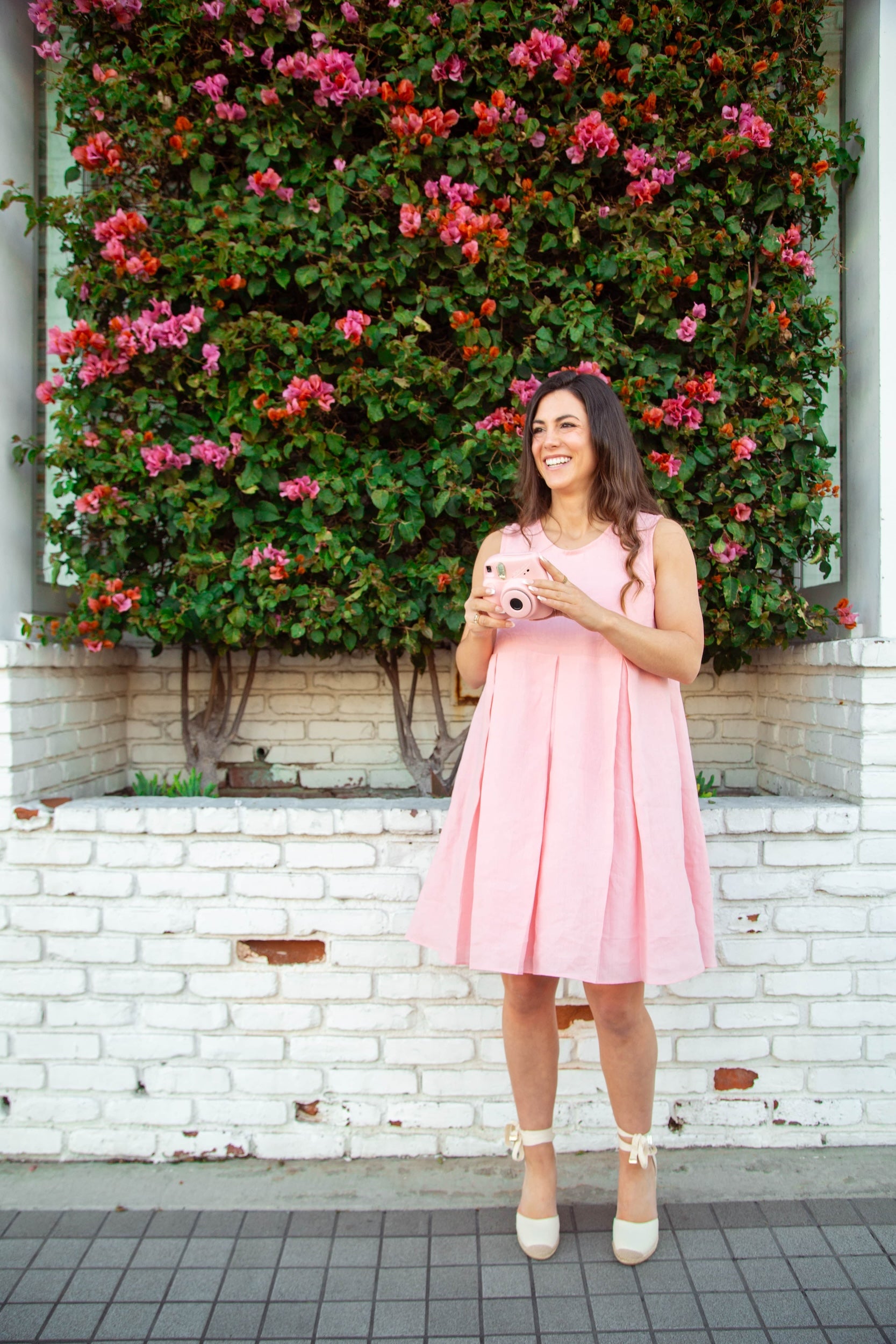Fashion Design in a Circular Economy | Designing Clothes that are Made to be Remade!

Hi everyone, it’s Emily!
Today, I will discuss what a circular fashion economy is and how it leads to decreased waste in the fashion industry, specifically from a fashion design perspective.
With less than 3% of garments coming from recycled materials, our current system is very wasteful. An estimated 73% of our clothes go to a landfill or to an incinerator. A circular economy is a more sustainable approach than the current system of taking, making, and disposing.
What is a Circular Economy?
A circular economy is based on regenerating natural systems. In other words, you are keeping renewable materials in use. As a designer, we can design out waste and pollution, which I will mention a few of these techniques shortly.
In a circular economy clothes are used more, made to be made again, and they are designed from safe and renewable materials. My personal favorite of these three characteristics is designing clothes that are made to be remade. As a designer we can attack this idea from a few different angles. You can take vintage clothes and deconstruct them and redesign them. You can source recycled materials or even dead stock. A cool place that is assisting buyers and producers with selling and finding deadstock fabric is called Queen of Raw.
From the standpoint of the designer the circular economy is all about thinking broad (“the system”) and thinking narrow (“the product”), then thinking about how to REthink traditional methods, which leads me to this next topic.
Designing for Low Waste
There are a few ways to design for low waste. One of them is the Zero Waste pattern. This method involves using the entirety of your fabric. Second, you can upcycle. This method is the transformation of a product in equal or higher value or quality. Your materials could come from an end roll or fabric samples or you could reconstruct a garment. You can reach out to manufacturers to source this way. It is always important to keep an open mind here with these practices but know the quantity available. Reconstructing a garment is a type of upcycling used for waste materials in a garment. You can reach out to manufacturers for samples. For the most part, these methods begin with sourcing.
I love these ideas because these techniques take creativity to another level while giving clothes more meaning. We can start treasuring our clothes more knowing that there’s a story behind them and a history. We can “throw out” the throwaway economy.
Scaling vs Replicating
If you are thinking big picture right now, you may be wondering how this works from a brand perspective. Scaling is another area we have to rethink in order to have a circular economy. We have to start thinking about replicating the process- whether that is reconstruction, upcycling, making zero waste patterns- rather than upscaling one garment. As stated by Helen Rowley at Kerring “Nature isn’t good at doing things on a large scale, but when it works it replicates all over.”
I personally find this way of thinking refreshing. I identify more with the small maker and being a capable and creative artisan rather than being a John Galliano. And if that’s you, great! I love his work. I personally like the idea of small scale. It gives consumers more choice in the market. It allows the consumer to see how a brand benefits them. You can see this idea in my own brand. If you haven’t checked it out, the link will be in the description.
I love that waste is unpredictable, and if we design from waste, the creativity and beauty that becomes exposed from that waste is so unique and imaginative. We can add cultural value by telling a story from upcycled materials and vintage and antique pieces.
Comment below if you’d like me to do more videos/blogs on sustainable fashion and designing in a circular economy. I would love to show you guys how some of these techniques work. Let me know if you have any questions or specific topics you’d like me to cover. Subscribe to my channel and click the bell to get notified when I upload new videos/blogs every Friday!. Thanks for watching and have a great day!
Watch the full YouTube video here:
What to watch next?
Watch this video on How to be Stylish and Shop Sustainably on a Budget https://youtu.be/Gqyj0j6axjk
Watch this video on How to Choose Fashion Fabrics with a Trip to Mood Fabrics: https://youtu.be/D7YpNxUlLfQ
Watch this video on Why You Should Get Your Clothes Tailored and How to Get Started with a Tailor: https://youtu.be/-EJiOlmm2KU
Follow me on:





